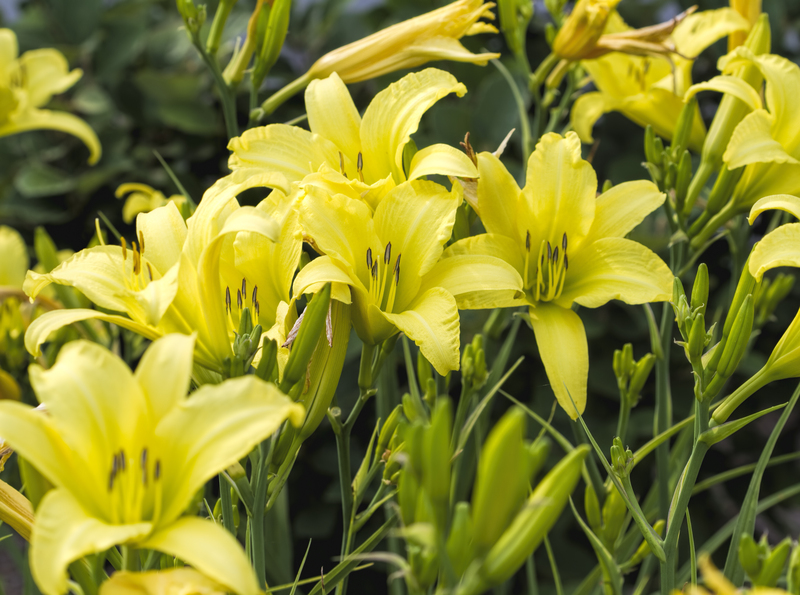Year-Round Garden Color Planning
Posted on 08/10/2024
When it comes to creating a garden that is vibrant and eye-catching throughout the year, thoughtful color planning is essential. A well-planned color scheme can transform any outdoor space into a serene sanctuary or a lively display. This article delves into year-round garden color planning to help you maintain a visually captivating garden during each season.
Understanding Seasonal Blooms
To achieve continuous color in your garden, it is vital to understand the variety of blooms that each season offers. Plant selection should encompass spring, summer, fall, and winter plants.
1. Spring Blooms - Spring is synonymous with renewal and rebirth. Many beautiful plants such as tulips, daffodils, and cherry blossoms flourish during this season. Incorporating bulbs and early perennials will ensure vibrant splashes of color.
2. Summer Blooms - Summer is characterized by bright and bold colors. Some popular choices for this season include roses, sunflowers, and petunias. Continuous deadheading and regular feeding can help summer plants remain vibrant.
3. Fall Blooms - Fall brings a palette of warm colors such as reds, oranges, and yellows. Mums, asters, and ornamental grasses can add stunning visuals as nature transitions.
4. Winter Blooms - While the winter season may seem bleak, there are many plants that thrive during colder months. Holly, winter jasmine, and witch hazel can infuse color and interest into winter gardens.

Integrating Foliage and Evergreen Plants
Flowering plants are not the only means of adding color to a garden. Foliage plants and evergreens provide constant color and texture throughout the year. Variegated leaves, silver tones, and colorful bark can all contribute to a garden's appeal.
1. Evergreens - Plants like boxwood, juniper, and conifers offer reliable greenery year-round. They provide structure and serve as background plants for more colorful blooms.
2. Colorful Foliage - Plants such as coleus, heuchera, and hosta have foliage in stunning shades of purple, red, and gold.
3. Seasonal Twigs and Berries - Some plants, like the red twig dogwood, offer colorful stems, while others, like the beautyberry, produce vibrant berries.
Layering and Garden Design
Layering various plants not only adds depth to your garden but also ensures continuous color. Plan your garden with a variety of heights and textures. Position taller plants towards the back and shorter ones near the front. This not only maximizes visibility but also promotes a beautiful cascade of colors.
1. Perennial Borders - Mix perennials with different blooming seasons to ensure non-stop color throughout the year.
2. Annuals and Biennials - These can fill gaps when perennials are not in bloom, ensuring constant color.
3. Ground Covers and Vines - Plants like creeping thyme and clematis add low-level and vertical interest, respectively.
Consideration of Hardscape and Decorative Elements
Incorporating hardscape elements such as garden paths, benches, and sculptures can complement and highlight your plantings. These elements provide contrast and attractive focal points.
1. Garden Paths - Stone or gravel paths not only guide viewers through the garden but also provide visual contrast against greenery.
2. Water Features - Fountains, ponds, and streams add reflective surfaces, sounds, and can cool the garden ambiance.
3. Decorative Pots and Sculptures - These can add pops of color and artistic flair.
Pros and Cons of Year-Round Garden Color Planning
Pros:
- Continuous visual appeal
- Engaging and dynamic garden spaces
- Biodiverse habitat for pollinators
Cons:
- Higher maintenance requirements
- Need for extensive knowledge of plants and seasons
- Initial high planning and design time investment
Tips for Successful Garden Color Planning
1. Research Plant Varieties - Understand which plants thrive in your region's climate.
2. Create a Planting Calendar - Plan when to plant and transplant for optimal blooms.
3. Soil Health and Fertilization - Feed and amend your soil appropriately for each plant type.
4. Regular Maintenance - Dedicate time to deadheading, pruning, and weeding.

Takeaways
1. Year-round garden color planning requires a blend of blooming plants, evergreens, and vibrant foliage.
2. Layering, design, and hardscapes play crucial roles.
3. Seasonal understanding and regular maintenance are key to success.
Conclusion
While year-round garden color planning requires thoughtful consideration and dedication, the payoff is a breathtaking garden that brings joy and beauty in every season. By incorporating a variety of plants, designing with depth, and using hardscape creatively, you can achieve a garden that never loses its charm. Embrace the challenge, and your garden will reward you with endless color and life.







